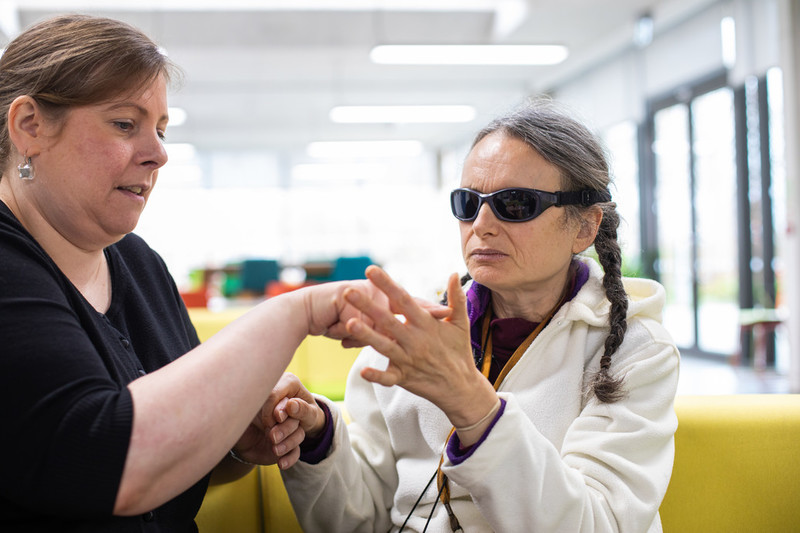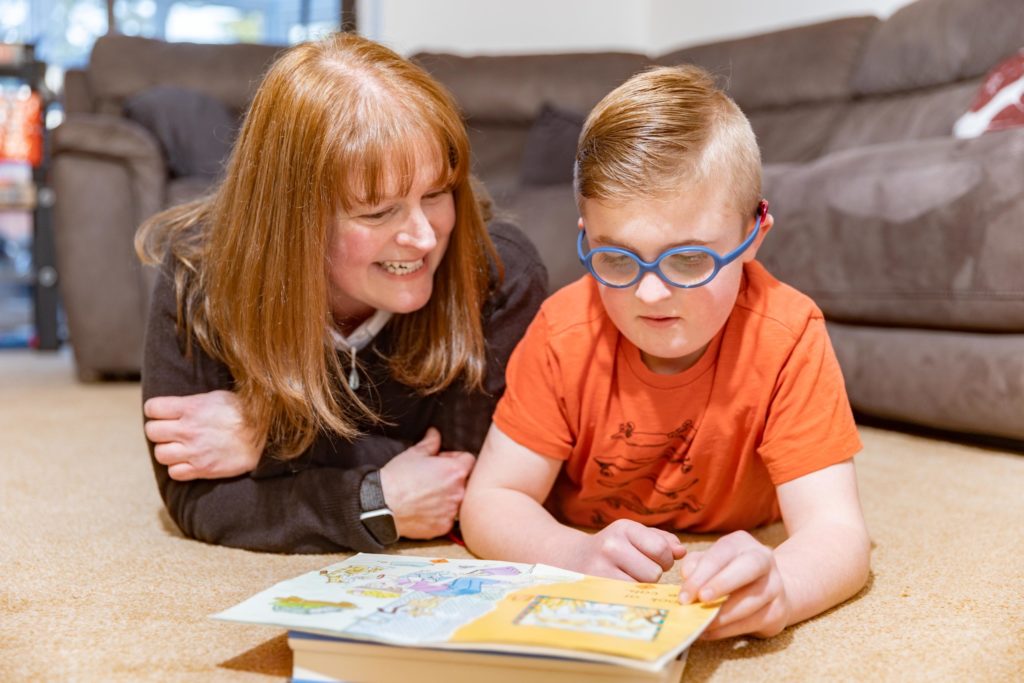Block alphabet
This page describes what Block alphabet is and how to use it.
What is Block alphabet?
Block alphabet is a simple way to communicate using touch, not sight or speech. Words are spelt in block capital letters on to the palm of your hand.
Who uses Block alphabet?
Block alphabet is used by people who are deafblind.
It can be especially helpful if you lose your sight and hearing later in life. It’s even easier to learn than Deafblind Manual.

Before you read on…
- You can communicate using a mix of different ways (we all do!).
- At Sense, we use whatever combination of speech, touch, sign or visual language works best.
- It’s never too late to start.
- Have a go and don’t worry about getting it wrong.
Top tips
How Sense can help
We offer free and impartial information about living with complex disabilities, including deafblindness.
We also offer services all over the UK, including day services, community support and residential care. Talk to our team to find out more.
Get in touch by phone, email, post or through a BSL interpreter.
- Use the whole of the palm for each letter.
- Make the letters large and clear.
- Start each letter from left to right and from top to bottom.
- Draw each letter on top of the last one.
- Pause slightly at the end of each word.
- With M, N and W, keep your finger on the person’s palm and draw the letter in one stroke, not separate strokes.
- For numbers, you can either spell them out or just draw them as figures: 1, 2, 3, 4, 5, and so on.
- Use the plain figure 7, not the continental version with the bar through it,
7,as this is easily confused with the figure 2.
Watch how to use the Block alphabet
Other types of communication
These are the main ways of communicating that we use:
-

Using touch
- Braille uses raised dots to touch.
- Deafblind Manual spells words on to your hand.
- Moon uses raised lines, curves and dots to touch.
- Tadoma uses lipreading by touch.
- Hand-under-hand signing using touch.
-

Using signs
- Sign language.
- Makaton, a simpler version of sign language.
- Visual frame signing for people with reduced vision.
- Objects of reference.
-

Using speech
-

Also
- Non-formal communication without speaking, writing or signing.
- Intensive interaction treating everything as communication.
Stay in touch

Get updates about our vital work, including volunteering, making a donation or supporting Sense campaigns.
This content was last reviewed in April 2023. We’ll review it again in 2025.
